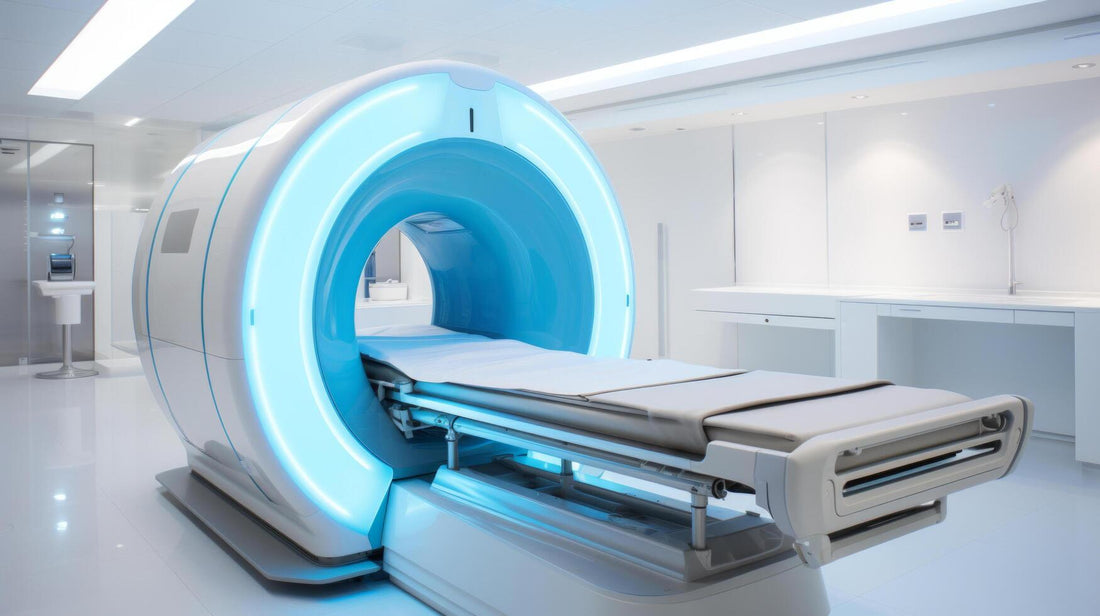
A Comprehensive Guide to the MRI Industry: Trends, Innovations, and Investment Opportunities
Share

The Magnetic Resonance Imaging (MRI) industry is at the forefront of medical innovation, offering critical diagnostic tools that are shaping the future of healthcare. From its ability to produce detailed images of internal structures to its role in diagnosing complex medical conditions, MRI technology has become indispensable. With the global MRI market projected to grow from $7.26 billion in 2021 to $12.19 billion by 2030, this industry represents a dynamic investment opportunity for those looking to capitalize on healthcare advancements.
Let’s explore how this sector is evolving and the opportunities it presents for investors.
Why MRI Is Indispensable in Modern Healthcare
1. Versatility in Diagnosis
MRI scans can detect a wide range of conditions, including:
· Tumors, inflammation, and bleeding
· Neurological disorders and stroke damage
· Cardiac abnormalities and vascular blockages
Unlike X-rays or CT scans, MRI doesn’t use ionizing radiation, making it a safer and more preferred imaging option for long-term monitoring of diseases such as cancer and cardiovascular conditions.
2. Monitoring Treatment Efficacy
MRI scans also play a vital role in evaluating the effectiveness of treatments like surgery, chemotherapy, or radiation therapy, allowing healthcare providers to tailor interventions based on real-time insights.
Key Drivers of Market Growth
1. Technological Advancements
Breakthroughs in MRI technology are transforming the industry:
· Functional MRI (fMRI): Improves diagnosis of brain disorders by mapping neural activity.
· Diffusion Tensor Imaging (DTI): Offers precise imaging of soft tissues.
· Magnetic Resonance Elastography (MRE): Enhances accuracy in liver and cardiac imaging.
Additionally, the transition from low-field MRI systems to high-field MRI systems (3T and higher) has significantly improved image resolution and scan speed, driving market demand.
2. Increased Prevalence of Chronic Diseases
The rising incidence of chronic conditions like cancer, diabetes, and heart disease—particularly in regions like North America, which holds 35.9% of the global MRI market—fuels the need for advanced diagnostic tools.
3. Innovations in Accessibility
The development of open MRI systems addresses the needs of claustrophobic patients, expanding the market reach. Meanwhile, closed MRI systems remain the gold standard for detailed imaging of the brain, heart, and other critical organs.
Innovations Reshaping the MRI Industry
1. Artificial Intelligence (AI) Integration
AI is revolutionizing MRI systems by enabling:
· Faster imaging and artifact reduction, even for patients with motion challenges.
· Enhanced diagnostic accuracy through pattern recognition.
· Lower doses of contrast agents, reducing patient risks.
Example: In 2022, GE Healthcare introduced SIGNA Experience, an AI-powered software platform that improves image quality and reduces scan times.
2. High-V MRI Systems
High-field strength MRI (3T and above) offers unparalleled imaging capabilities, including:
· Enhanced visualization of metal implants, reducing diagnostic challenges.
· Reduced susceptibility artifacts, improving imaging in areas like the lungs.
Example: Siemens Healthineers launched the 7T Magnetom Terra.X1 and 3T Magnetom Cima.X2 in 2022, delivering high-resolution images for complex cases.
3. Hybrid MRI Systems
Hybrid systems combine MRI with other imaging technologies, providing:
· Faster exam times and higher throughput.
· Better integration into clinical workflows.
These advancements are creating new revenue streams for industry leaders.
Regional Insights: North America Leads the Way
North America, particularly the United States, dominates the global MRI market with a 92.5% share in 2022. Factors driving this growth include:
· High prevalence of chronic diseases like coronary heart disease (697,000 deaths annually in the U.S.).
· Established healthcare infrastructure and strong investment in medical technology.
Other regions, such as Europe and Asia-Pacific, are also witnessing rapid adoption of advanced MRI systems, offering expansion opportunities for investors.
Opportunities for Investors in the MRI Industry
The MRI industry’s trajectory offers numerous opportunities for investors:
1. AI-Powered Diagnostics
AI integration is still in its early stages, presenting a significant opportunity for investment in companies pioneering this technology, such as General Electric, Philips, and Canon Medical Systems.
2. Sustainability and Accessibility
Open MRI systems and innovations in low-field MRI technology cater to previously underserved populations, expanding the market and addressing environmental concerns.
3. Emerging Markets
The growing demand for MRI systems in developing economies provides untapped potential, as these regions invest in modernizing their healthcare infrastructure.
4. High-Field and Hybrid Systems
Investing in companies advancing high-field and hybrid MRI technologies positions stakeholders to benefit from the industry's shift toward higher efficiency and better diagnostic capabilities.
Recent Developments and Market Leaders
Leading players in the MRI market include:
· Siemens Healthineers AG
· General Electric
· Koninklijke Philips N.V.
· Canon Medical Systems Corporation
· Fujifilm Holdings Corporation
These companies are driving innovation through strategic product launches. For instance:
· Canon Medical Systems launched the Vantage Fortian MRI scanner with advanced AI-powered noise reduction in July 2022.
· Siemens Healthineers introduced state-of-the-art high-field MRI systems in November 2022, setting new industry benchmarks.
Conclusion: The Future of the MRI Industry
The MRI industry stands at the intersection of technology, healthcare, and innovation, offering a compelling case for investment. As advancements like AI, high-field systems, and hybrid technologies redefine diagnostic imaging, the sector's growth is expected to accelerate. With increasing global demand, especially in regions like North America, and a focus on accessibility and precision, MRI technology is well-positioned for long-term success.
For investors, the MRI market is not just a healthcare innovation story—it’s a thriving sector with robust growth potential. Now is the time to align with industry leaders and emerging technologies to capitalize on this transformative opportunity.